Prajjwal Bhargava
Jack
Let's (not) just put things in Context: Test-Time Training for Long-Context LLMs
Dec 15, 2025Abstract:Progress on training and architecture strategies has enabled LLMs with millions of tokens in context length. However, empirical evidence suggests that such long-context LLMs can consume far more text than they can reliably use. On the other hand, it has been shown that inference-time compute can be used to scale performance of LLMs, often by generating thinking tokens, on challenging tasks involving multi-step reasoning. Through controlled experiments on sandbox long-context tasks, we find that such inference-time strategies show rapidly diminishing returns and fail at long context. We attribute these failures to score dilution, a phenomenon inherent to static self-attention. Further, we show that current inference-time strategies cannot retrieve relevant long-context signals under certain conditions. We propose a simple method that, through targeted gradient updates on the given context, provably overcomes limitations of static self-attention. We find that this shift in how inference-time compute is spent leads to consistently large performance improvements across models and long-context benchmarks. Our method leads to large 12.6 and 14.1 percentage point improvements for Qwen3-4B on average across subsets of LongBench-v2 and ZeroScrolls benchmarks. The takeaway is practical: for long context, a small amount of context-specific training is a better use of inference compute than current inference-time scaling strategies like producing more thinking tokens.
Correlating and Predicting Human Evaluations of Language Models from Natural Language Processing Benchmarks
Feb 24, 2025Abstract:The explosion of high-performing conversational language models (LMs) has spurred a shift from classic natural language processing (NLP) benchmarks to expensive, time-consuming and noisy human evaluations - yet the relationship between these two evaluation strategies remains hazy. In this paper, we conduct a large-scale study of four Chat Llama 2 models, comparing their performance on 160 standard NLP benchmarks (e.g., MMLU, ARC, BIG-Bench Hard) against extensive human preferences on more than 11k single-turn and 2k multi-turn dialogues from over 2k human annotators. Our findings are striking: most NLP benchmarks strongly correlate with human evaluations, suggesting that cheaper, automated metrics can serve as surprisingly reliable predictors of human preferences. Three human evaluations, such as adversarial dishonesty and safety, are anticorrelated with NLP benchmarks, while two are uncorrelated. Moreover, through overparameterized linear regressions, we show that NLP scores can accurately predict human evaluations across different model scales, offering a path to reduce costly human annotation without sacrificing rigor. Overall, our results affirm the continued value of classic benchmarks and illuminate how to harness them to anticipate real-world user satisfaction - pointing to how NLP benchmarks can be leveraged to meet evaluation needs of our new era of conversational AI.
The Llama 3 Herd of Models
Jul 31, 2024Abstract:Modern artificial intelligence (AI) systems are powered by foundation models. This paper presents a new set of foundation models, called Llama 3. It is a herd of language models that natively support multilinguality, coding, reasoning, and tool usage. Our largest model is a dense Transformer with 405B parameters and a context window of up to 128K tokens. This paper presents an extensive empirical evaluation of Llama 3. We find that Llama 3 delivers comparable quality to leading language models such as GPT-4 on a plethora of tasks. We publicly release Llama 3, including pre-trained and post-trained versions of the 405B parameter language model and our Llama Guard 3 model for input and output safety. The paper also presents the results of experiments in which we integrate image, video, and speech capabilities into Llama 3 via a compositional approach. We observe this approach performs competitively with the state-of-the-art on image, video, and speech recognition tasks. The resulting models are not yet being broadly released as they are still under development.
Effective Long-Context Scaling of Foundation Models
Sep 27, 2023



Abstract:We present a series of long-context LLMs that support effective context windows of up to 32,768 tokens. Our model series are built through continual pretraining from Llama 2 with longer training sequences and on a dataset where long texts are upsampled. We perform extensive evaluation on language modeling, synthetic context probing tasks, and a wide range of research benchmarks. On research benchmarks, our models achieve consistent improvements on most regular tasks and significant improvements on long-context tasks over Llama 2. Notably, with a cost-effective instruction tuning procedure that does not require human-annotated long instruction data, the 70B variant can already surpass gpt-3.5-turbo-16k's overall performance on a suite of long-context tasks. Alongside these results, we provide an in-depth analysis on the individual components of our method. We delve into Llama's position encodings and discuss its limitation in modeling long dependencies. We also examine the impact of various design choices in the pretraining process, including the data mix and the training curriculum of sequence lengths -- our ablation experiments suggest that having abundant long texts in the pretrain dataset is not the key to achieving strong performance, and we empirically verify that long context continual pretraining is more efficient and similarly effective compared to pretraining from scratch with long sequences.
Llama 2: Open Foundation and Fine-Tuned Chat Models
Jul 19, 2023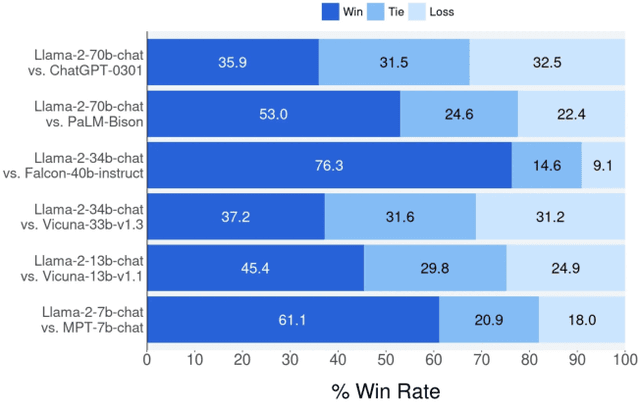

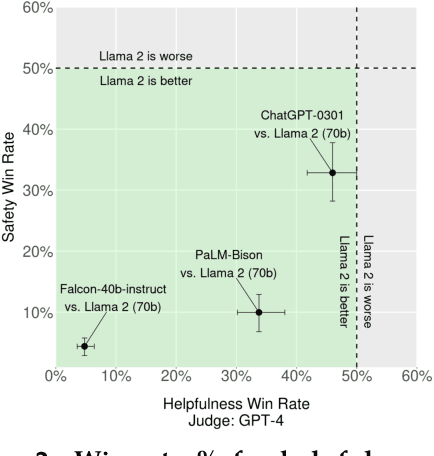

Abstract:In this work, we develop and release Llama 2, a collection of pretrained and fine-tuned large language models (LLMs) ranging in scale from 7 billion to 70 billion parameters. Our fine-tuned LLMs, called Llama 2-Chat, are optimized for dialogue use cases. Our models outperform open-source chat models on most benchmarks we tested, and based on our human evaluations for helpfulness and safety, may be a suitable substitute for closed-source models. We provide a detailed description of our approach to fine-tuning and safety improvements of Llama 2-Chat in order to enable the community to build on our work and contribute to the responsible development of LLMs.
Sequence Modeling is a Robust Contender for Offline Reinforcement Learning
May 26, 2023Abstract:Offline reinforcement learning (RL) allows agents to learn effective, return-maximizing policies from a static dataset. Three major paradigms for offline RL are Q-Learning, Imitation Learning, and Sequence Modeling. A key open question is: which paradigm is preferred under what conditions? We study this question empirically by exploring the performance of representative algorithms -- Conservative Q-Learning (CQL), Behavior Cloning (BC), and Decision Transformer (DT) -- across the commonly used D4RL and Robomimic benchmarks. We design targeted experiments to understand their behavior concerning data suboptimality and task complexity. Our key findings are: (1) Sequence Modeling requires more data than Q-Learning to learn competitive policies but is more robust; (2) Sequence Modeling is a substantially better choice than both Q-Learning and Imitation Learning in sparse-reward and low-quality data settings; and (3) Sequence Modeling and Imitation Learning are preferable as task horizon increases, or when data is obtained from human demonstrators. Based on the overall strength of Sequence Modeling, we also investigate architectural choices and scaling trends for DT on Atari and D4RL and make design recommendations. We find that scaling the amount of data for DT by 5x gives a 2.5x average score improvement on Atari.
AUTODIAL: Efficient Asynchronous Task-Oriented Dialogue Model
Mar 10, 2023



Abstract:As large dialogue models become commonplace in practice, the problems surrounding high compute requirements for training, inference and larger memory footprint still persists. In this work, we present AUTODIAL, a multi-task dialogue model that addresses the challenges of deploying dialogue model. AUTODIAL utilizes parallel decoders to perform tasks such as dialogue act prediction, domain prediction, intent prediction, and dialogue state tracking. Using classification decoders over generative decoders allows AUTODIAL to significantly reduce memory footprint and achieve faster inference times compared to existing generative approach namely SimpleTOD. We demonstrate that AUTODIAL provides 3-6x speedups during inference while having 11x fewer parameters on three dialogue tasks compared to SimpleTOD. Our results show that extending current dialogue models to have parallel decoders can be a viable alternative for deploying them in resource-constrained environments.
DiscoSense: Commonsense Reasoning with Discourse Connectives
Oct 22, 2022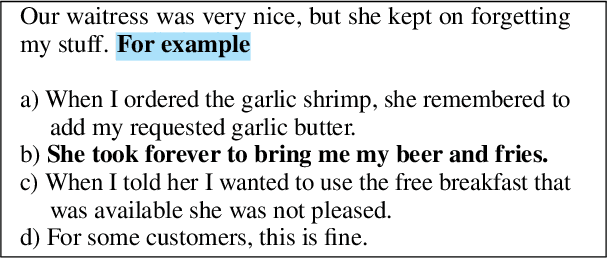
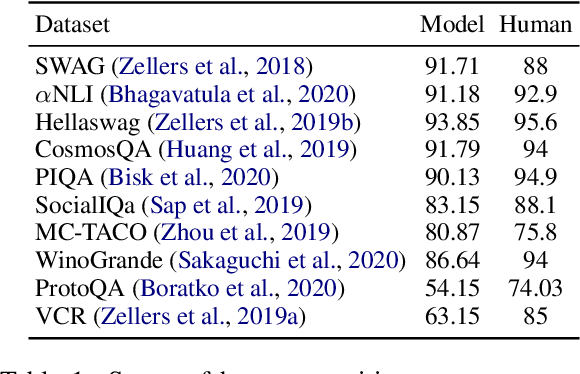
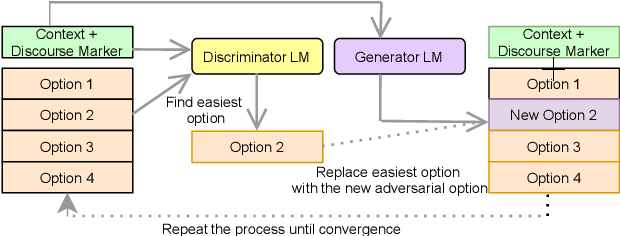
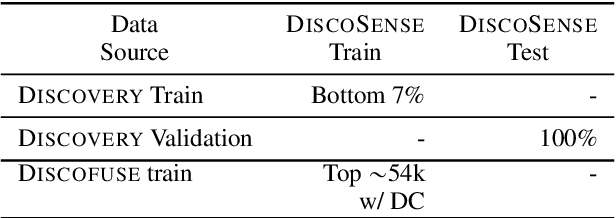
Abstract:We present DiscoSense, a benchmark for commonsense reasoning via understanding a wide variety of discourse connectives. We generate compelling distractors in DiscoSense using Conditional Adversarial Filtering, an extension of Adversarial Filtering that employs conditional generation. We show that state-of-the-art pre-trained language models struggle to perform well on DiscoSense, which makes this dataset ideal for evaluating next-generation commonsense reasoning systems.
Commonsense Knowledge Reasoning and Generation with Pre-trained Language Models: A Survey
Jan 28, 2022
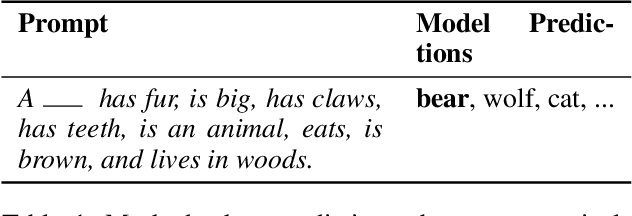
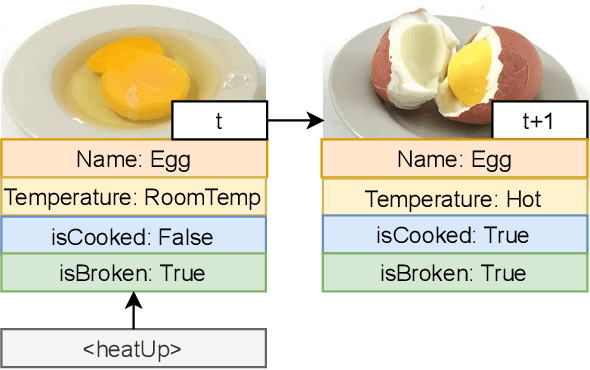

Abstract:While commonsense knowledge acquisition and reasoning has traditionally been a core research topic in the knowledge representation and reasoning community, recent years have seen a surge of interest in the natural language processing community in developing pre-trained models and testing their ability to address a variety of newly designed commonsense knowledge reasoning and generation tasks. This paper presents a survey of these tasks, discusses the strengths and weaknesses of state-of-the-art pre-trained models for commonsense reasoning and generation as revealed by these tasks, and reflects on future research directions.
Generalization in NLI: Ways To Go Beyond Simple Heuristics
Oct 04, 2021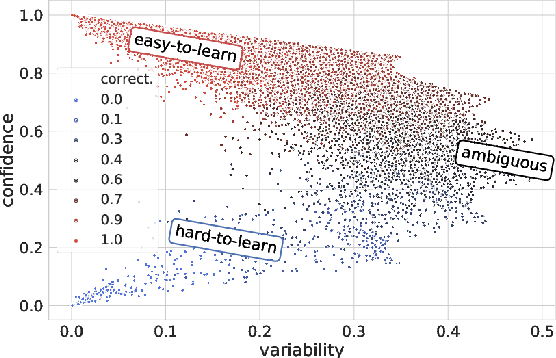
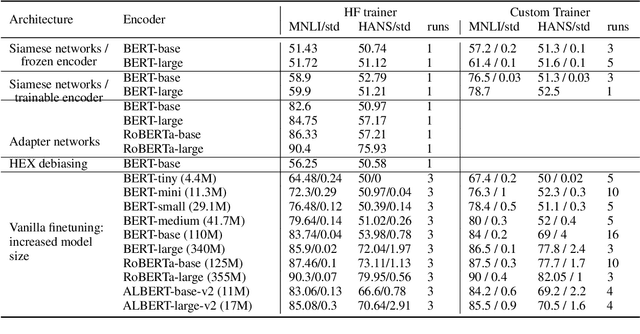
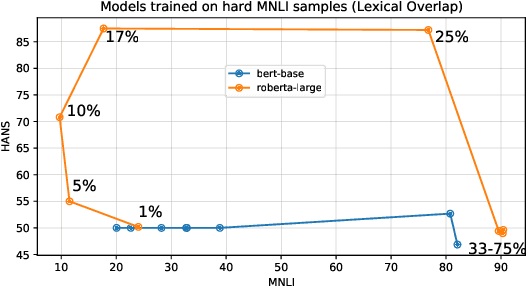
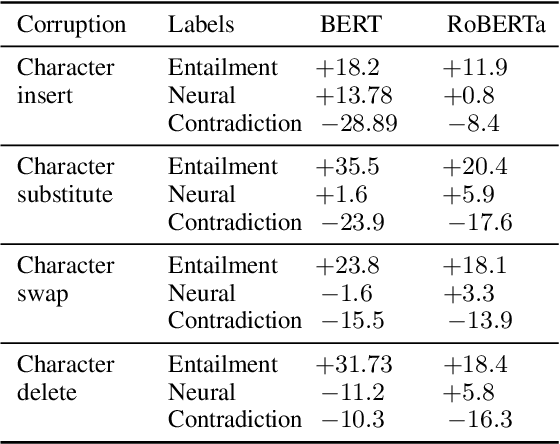
Abstract:Much of recent progress in NLU was shown to be due to models' learning dataset-specific heuristics. We conduct a case study of generalization in NLI (from MNLI to the adversarially constructed HANS dataset) in a range of BERT-based architectures (adapters, Siamese Transformers, HEX debiasing), as well as with subsampling the data and increasing the model size. We report 2 successful and 3 unsuccessful strategies, all providing insights into how Transformer-based models learn to generalize.
 Add to Chrome
Add to Chrome Add to Firefox
Add to Firefox Add to Edge
Add to Edge